Although it brings multi-dimensional benefits, to complete it, it is necessary to promptly and thoroughly overcome the "bottlenecks" in infrastructure and technology to bring the highest efficiency to patients, to accelerate the progress of building a national health database, to complete electronic medical records and to connect 100% of medical examination and treatment facilities (both public and private) to the shared data network.
Electronic medical records need a "push"
Up to now, the whole country has 1,128/1,650 (accounting for more than 68%) public and private hospitals implementing electronic medical records. Up to now, some Departments of Health have completed 100% of public medical examination and treatment facilities implementing: An Giang, Bac Ninh, Quang Ninh, Thanh Hoa, Nghe An, Quang Ngai, Hanoi , Hai Phong, Da Nang, ... However, in the process of implementing electronic medical records, there are some difficulties and problems, leading to many hospitals not completing.

Speaking to CAND Newspaper reporters, Major General Vu Van Tan, Director of the Department of Administrative Management of Social Order ( Ministry of Public Security ), said that the main reason for the slow progress of deploying hospital management software (HIS) and electronic medical records (EMR) compared to the Government's requirements is that the information technology (IT) infrastructure in many places has not met the requirements (lack of servers, transmission lines, data storage); lack of unified data standards, difficulty in connecting between systems; IT human resources in healthcare are still thin; doctors and nurses are not familiar with using the software; funding for deployment, maintenance, and security is limited; the software is not synchronized, each supplier follows its own format.
Sharing with CAND Newspaper reporters about this, Dr. Nguyen Le Phuc, Deputy Director of the Department of Science, Technology and Training (Ministry of Health) also said that the Minister and leaders of the Ministry of Health are very interested in and strongly direct the enhancement of application and development of IT in the industry, step by step transforming digital healthcare, building and developing smart healthcare.
However, in the implementation process, there are still some difficulties, such as: The awareness of many leaders and directors of medical examination and treatment facilities is still limited, not really determined, interested and fully implemented the implementation of digital transformation and electronic medical records at the unit; funding sources and other resources to implement digital transformation and electronic medical records at the units are still difficult (especially for autonomous public hospitals of groups 3 and 4 in localities); the implementation of establishment, appraisal, approval, organization of bidding, selection of suppliers of project products, tasks, and plans for hiring IT services in many localities and units is facing difficulties.
“According to the above analysis, it can be seen that private hospitals have a higher rate of implementing electronic medical records than public hospitals, because the mechanism for purchasing and hiring IT services is not as constrained as public units,” said Dr. Phuc.
It is known that the implementation of electronic medical records has been required by the Prime Minister to be completed in hospitals by 2025. So with a few months left until the end of the year, will this task be accomplished?
According to the leader of the Department of Science, Technology and Training, the Ministry of Health has had drastic solutions such as: Developing and submitting for promulgation a plan to regulate the prices of medical examination and treatment services, including the cost structure of IT application; costs of not printing films, printing paper for medical images, testing on the medical image management system and testing management to promote digitization, digital transformation and electronic medical records.
Coordinate with Vietnam Social Security (Ministry of Finance) to unify the application of procedures and processes for health insurance payment appraisal for hospitals implementing electronic medical records. Propose some solutions on IT infrastructure, IT applications... to accelerate the implementation of electronic medical records.
According to Major General Vu Van Tan, the key solution is to perfect the mechanism and unified technical standards nationwide. Issue a set of mandatory criteria for HIS/EMR software: data standards, open API, security, and connectivity. Stipulate a 3-phase roadmap: Basic - regional connectivity - national connectivity. Invest in infrastructure and human resources, prioritize investment capital, and support IT infrastructure for districts and communes. Organize 3-level training: IT staff, management staff, and medical staff to use the system.
Promote connection and data sharing; standardize medical data, connect electronic medical records with the national database on population and health insurance. Apply citizen identification codes to uniquely identify patient records. Strengthen inspection, supervision and rewards. Report progress periodically, link KPIs to the responsibility of the head.
These solutions set a target that by 2026, 100% of provincial hospitals and over 70% of district hospitals will deploy HIS/EMR to standards; over 80% of electronic medical records will be linked to the national database; 90% of medical staff will be trained and proficient in using the software. Finally, reduce at least 50% of paperwork, increase transparency, and serve the people better.
Building a comprehensive digital health "ecosystem"
Building a paperless smart hospital and digitizing the entire process is the goal that the health sector is aiming for, and is also the realization of the policy of Resolutions 57 and 72 of the Politburo. In the process of implementing Project 06 of the Government, the Project 06 Working Group highly appreciated the efforts and determination of the Ministry of Health.
Major General Vu Van Tan said that up to now, the health sector has achieved very positive and clear initial results, bringing practical benefits and being welcomed by the people such as: The deployment of using chip-embedded citizen identification cards to replace paper health insurance cards has been applied at 12,455 medical examination and treatment facilities nationwide. This is a remarkable success, helping people reduce paperwork hassles.
The official deployment of the Electronic Health Book on VNeID (from October 2024) with over 26 million citizen information is an important step in personalizing medical data, helping people monitor their own health. Other utilities such as deploying 500 biometric medical examination registration kiosks at 488 hospitals, helping to reduce waiting time; or connecting data of 373 medical examination and treatment facilities to the coordination platform, forming 2.5 million electronic medical records... are all remarkable results.
“The health sector has taken the right step in focusing on utilities serving the people. However, these are only the results of the first phase. For the health sector's digital transformation to really "take off", the most important and urgent task in the coming time is to thoroughly resolve the "bottlenecks" in infrastructure and data.
The health sector needs to focus all resources to accelerate the progress of building a national health database, completing electronic medical records and connecting 100% of medical examination and treatment facilities (both public and private) to the shared data network. When there is good infrastructure and "correct, sufficient, clean, live, unified, and shared" data, the above-mentioned utilities will truly bring into full play their value, creating a comprehensive digital health "ecosystem", Major General Vu Van Tan emphasized.
According to Dr. Nguyen Le Phuc, to implement Resolution 57 and 72, in the coming time, the health sector plans to focus on 3 groups of breakthrough solutions such as: Completing the legal corridor and legal documents; investing in improving IT infrastructure, ensuring network safety and security; strengthening propaganda, communication, and rewards. In particular, adjusting and supplementing Circular No. 53/2014/TT-BYT and Circular No. 54/2017/TT-BYT to comply with the Law on Medical Examination and Treatment and removing difficulties for hospitals when implementing IT applications.
Regarding the proposal of the Department of Administrative Management of Social Order Police on the Government to consider establishing a Fund to support the digital transformation of grassroots healthcare and allow the piloting of a model digital hospital in 3 economic regions for nationwide replication, Dr. Nguyen Le Phuc said that this is considered a solution that can support the promotion of digital transformation at medical examination and treatment facilities. However, to effectively implement it, it is necessary to continue to supplement and perfect the legal corridor, clarifying contents such as: Fund management agency, scope and subjects of support, mechanism for determining support levels as well as fund formation sources and operation mechanisms.
Regarding the pilot model of digital hospitals in 3 economic regions for nationwide replication, the Ministry of Health has relatively completed this content in terms of legal basis. Currently, for the digital hospital model, the Ministry of Health is continuing to complete regulations and guidelines for localities. "The pilot model of digital hospitals in 3 economic regions can be said to be suitable to promote digital transformation in the field of medical examination and treatment. It is considered a solution that can be implemented in the coming period," Dr. Phuc commented.
Source: https://cand.com.vn/y-te/bai-cuoi-can-nhung-giai-phap-dot-pha-de-chuyen-doi-so-y-te-cat-canh-i787974/


![[Photo] Prime Minister Pham Minh Chinh meets with representatives of outstanding teachers](https://vphoto.vietnam.vn/thumb/1200x675/vietnam/resource/IMAGE/2025/11/15/1763215934276_dsc-0578-jpg.webp)


![[Photo] General Secretary To Lam receives Vice President of Luxshare-ICT Group (China)](https://vphoto.vietnam.vn/thumb/1200x675/vietnam/resource/IMAGE/2025/11/15/1763211137119_a1-bnd-7809-8939-jpg.webp)




















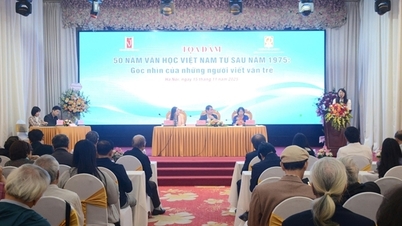
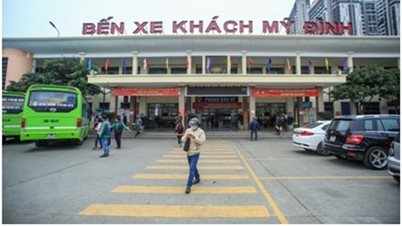














































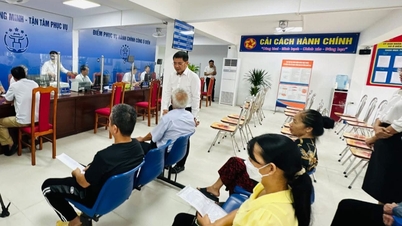






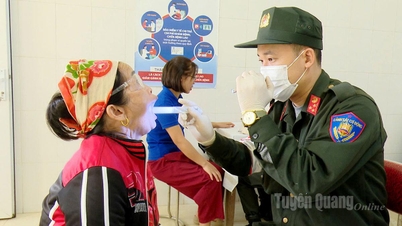





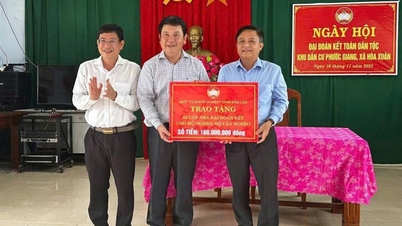















Comment (0)